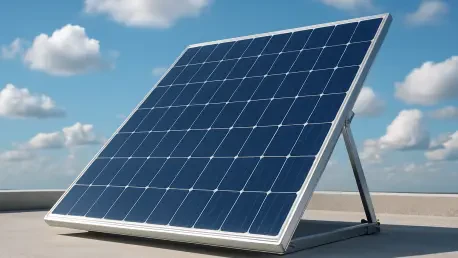For the first time in over ten years, the European Union (EU) is witnessing a deceleration in its solar energy expansion, an unsettling shift in the landscape of renewable energy growth. The onset of this slowdown has been largely attributed to a curtailment of governmental subsidies specifically directed at rooftop solar panel installations across member nations. These reductions come in the wake of changing political priorities, where funds are being redirected towards defense and the support of local industries. This evolving scenario poses significant challenges to the EU’s clean energy transition, highlighting the nuances of policy, economic pressures, and geopolitical tensions in shaping the future of sustainable energy solutions in the region.
Projected Solar Capacity and Its Implications
Industry data from SolarPower Europe suggests a notable reduction in projected solar capacity installations, with expectations set at 64.2 gigawatts (GW) of new solar energy capacity in 2025. This marks a marginal decline of 1.4% compared to the previous year. Such a decrease, although seemingly modest, has profound implications for the EU’s energy landscape, particularly in its quest to meet stringent climate targets and reduce reliance on Russian energy imports. The EU’s ambition to accumulate 750GW of solar energy capacity by 2030 is now confronted with a potential shortfall of around 27GW. The gravity of these figures signals an urgent need for strategic interventions to uphold momentum in the region’s renewable energy sector.
The current slowdown significantly impacts residential rooftop solar installations, which, this year, are expected to account for only 15% of new capacity—compared to 30% observed between 2020 and 2023. The shift underscores a broader trend affected by diminishing incentives such as feed-in tariffs in key countries like Germany, France, and the Netherlands. These tariffs previously played a critical role in bolstering the adoption of solar technology among homeowners. The policy changes reflect broader economic and political considerations, complicating the renewable energy landscape in unforeseen ways.
Economic Uncertainty and Market Dynamics
The decrease in solar growth also reflects broader economic concerns, with increasing interest rates impacting consumer financing options. Rising borrowing costs present challenges for residential and commercial entities aiming to invest in solar infrastructure. These economic headwinds are compounded by misinformation within the industry, notably surrounding legislative changes in Germany that affect solar energy compensation. Such misinformation not only stalls market momentum but also creates uncertainty among potential stakeholders contemplating investment in solar technologies.
Germany, which has historically been a leading force in solar energy adoption, faces critical scrutiny of its policies. Despite government intentions to reassess renewable energy needs, ongoing policy debates have sparked concerns over the sector’s future. The debate includes balancing short-term energy needs with long-term climate goals, a dilemma that could stifle innovation and progress if not addressed promptly. Industry stakeholders emphasize the importance of clear, consistent policies to maintain investor confidence and sustain market growth amidst financial and geopolitical pressures.
Strategic Interventions for Sustainable Growth
The challenges confronting the EU’s solar energy segment serve as a critical juncture for evaluating and enhancing strategic policy measures. Addressing these issues requires nuanced approaches, including potential recalibration of incentives to stimulate both residential and commercial sectors. Collaborative engagements between government entities, industry players, and financial institutions could result in innovative solutions to navigate the complexities of current economic conditions while maintaining commitment to carbon neutrality goals.
Reassessing and potentially revamping subsidy frameworks might provide a lifeline for sustaining solar growth in Europe. Policymakers could explore comprehensive plans that consider both budgetary constraints and the compelling need for clean energy. By adopting a balanced approach that weighs immediate economic realities against long-term sustainability outcomes, the EU can potentially reinvigorate its solar energy trajectory, reaffirming its role as a global leader in the transition to renewable energy sources.
A Path Forward for European Solar
For the first time in over a decade, the European Union (EU) is experiencing a slowdown in its solar energy growth, marking a concerning shift in the field of renewable energy expansion. This dip is primarily linked to the scaling back of governmental subsidies for rooftop solar panel installations throughout its member countries. These financial cuts coincide with shifting political agendas, where funds are being reallocated towards bolstering defense and local industries. This changing climate presents notable challenges to the EU’s goal of transitioning to clean energy. It underscores the complexities of policy-making, economic challenges, and geopolitical tensions that influence the future of sustainable energy solutions across the region. As member states wrestle with balancing economic demands and environmental commitments, the EU must navigate this intricate landscape to sustain its renewable energy goals while addressing other pressing concerns. This scenario is reflective of how intertwined global issues impact energy policies.









